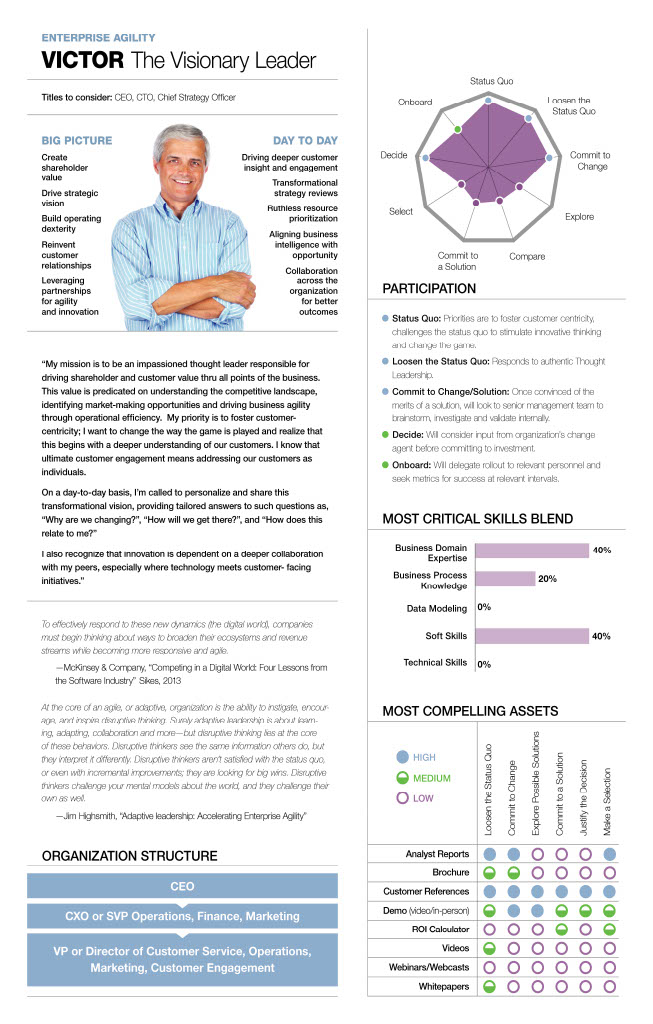Heart disease is the top cause of death worldwide, according to the World Health Organization. It accounts for 16% of the global death toll, and the number of its victims keeps rising year on year given the lifestyle we’ve cultivated.
There are ways to decrease your risk of suffering from heart disease, such as adopting a healthy, balanced diet, exercising for at least 2.5 hours per week, and giving up vices such as smoking and excessive alcohol consumption. These things aren’t that difficult to do. But why isn’t everyone doing them?
It’s because those who aren’t shifting to a healthier lifestyle haven’t experienced the pain of heart disease.
People buy for one main reason: To improve their condition. In the B2B context, this boils down to either helping your customer make more money or helping them mitigate risk.
Whatever the driving force is, the customer is, to a certain degree, dissatisfied with how things are. They know their situation could be better. And the fact that a stakeholder is thinking about shaking up their status quo means that there is a pain point that you, as a seller, could capitalize on.
What are customer pain points?
Pain points are the specific problems or issues that your clients may experience while on their customer journey. Since there could be a lot of problems, it’s important to prioritize which ones really need to be addressed. Think outside the box and put yourself in your customers’ shoes: What could be done to improve the account’s profitability?
As a modern seller, you need to focus on helping and educating your customers rather than selling to them. In the age of digital selling, your customers are bombarded with information and advertisements from all fronts. What will work best is a targeted, personalized approach centered on their agenda—not yours.
Always keep in mind how uncomfortable it could feel to be at the receiving end of a relentless sales pitch. You don’t want to be the pushy kind of seller that people can’t help but avoid. So shift your messaging slightly and focus on your genuine desire to help your buyers. While nobody likes being sold to, everyone likes to be helped out—and if you prove your value to your customers, they’ll be more inclined to purchase your product.
Identifying Your Customers’ Pain Points
Before you can address your customers’ pain points, you need to identify them first. Your customers could be facing several problems at the same time—which issue should you address first? How can you unlock opportunities within an account by addressing this problem?
1. Social Listening
Social listening is probably the easiest way to reveal a customer’s pain points. Keep your eyes and ears open to see what your current and target buyers are doing online and what they’re saying on social media. You’d be surprised by the amount of valuable information you can from an account’s decision-makers, employees, industry peers, and competitors.
2. Qualitative Market Research
Qualitative research allows sellers to get detailed responses from customers about their buying journey and the problems they face. It’s harder to conduct than quantitative research—you’d need more time and effort to write sentences compared to encircling a number on a scoring system—but it yields better results given the fact that no two pain points are exactly the same. Since qualitative research lets the customers explain their problems in full, you’d be able to see the most common problems and the most serious roadblocks in your transactions.
You need to ask the right questions in order to properly conduct qualitative research. As we’ve said earlier, put yourself in your customer’s shoes and try to visualize what your problems would be. Ask open-ended questions that can help you get to the root of the issue.
3. Your Customer Service Team
A customer’s pain points can change during their buying journey. What might be their most pressing priority while evaluating your purchase might cease to be a problem after signing the contract.
This is when your customer service team comes in.
Your customer service team is on the frontline of your business, fielding calls and complaints from your clients. This makes them crucial sources of information when it comes to fine-tuning your messaging. The key is digging deeper into the problems the customers have presented, distilling them into the simplest possible point. For example, if a customer said that they didn’t purchase again because they weren’t offered a discount, that could be an indicator of a financial pain point—and you could be missing significant opportunities because of this practice.
Conclusion
As we’ve mentioned at the beginning of this blog, people buy to improve their condition—and the fact that they’re thinking about purchasing from you is significant.
One final bit of advice: The next time you have a conversation with your client, try asking them outright why they think you and your company can help them. This can reveal significant information about what differentiates you from your competitors, and how you can improve your messaging.
We hope this helps!





